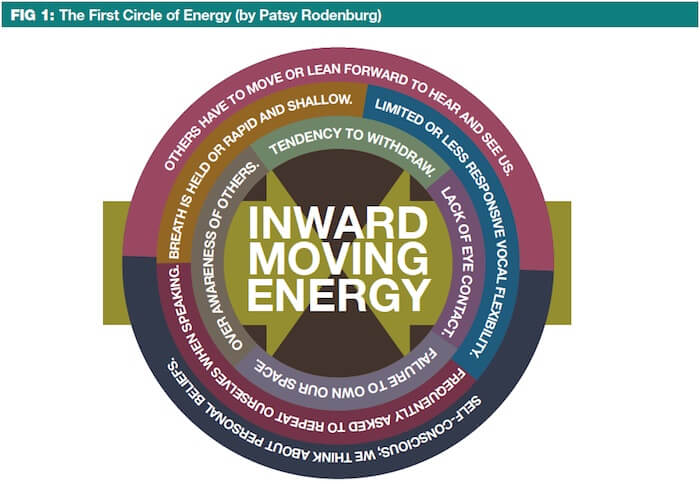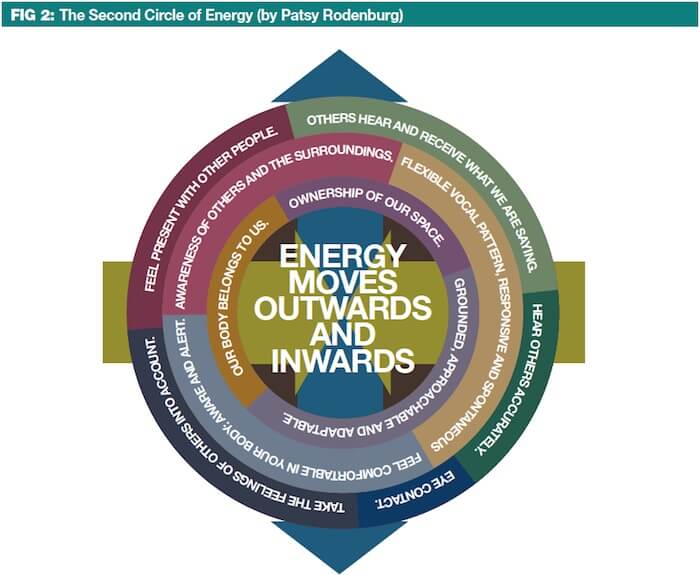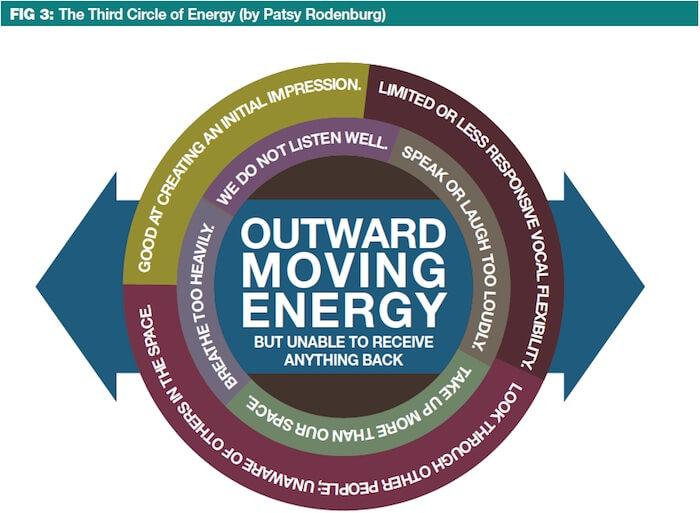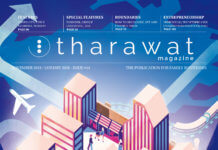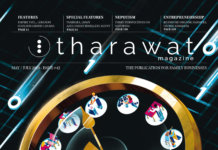Building a family business is a delicate balancing act. Creating a legacy requires family members to firmly establish the values that the family business will stake its reputation on. The transfer of generational values and visions from one line of succession to another is imperative for a family businesses continued success. Yet, this essential component alongside many other determinants of sustainability is highly dependent upon communication. Communication is key in bringing about not only the transfer from one generation to another but also to successfully run the day-to-day operations of a family business. Families must be able to effectively communicate across generations for a myriad of reasons.
In this article, we explore the factors that influence the way we communicate and how we are perceived by others. Central Connects, within The Royal Central School of Speech and Drama; a conservatoire drama school and internationally renowned specialist college of the University of London, are experts in the transfer of voice, accent softening, communication skills, pitching, presenting and leadership and management to the business community. The philosophy and methodologies Central Connects use are based on proven empirical research and exercises derived from the fields of actor training, voice training and Forum Theatre. Deriving from proven acting and communications theories, Central Connects leads to a deeper understanding of the way we communicate in order to improve business productivity through effective communication and rapport in the workplace.
What communication is based upon
Body and voice expose our emotions and opinions to the world. Poor communication skills can prevent success whilst creating misleading outcomes and incorrect assumptions within a family business. By using effective communication skills, we can avoid the misinterpretation of messages and personality clashes and instead transfer our values and visions to the next generation with authenticity and ease.
What are the qualities required for effective communication? Though regularly assumed, the content of the message is not what requires our primary focus. It is instead the physiological (our vocal and physical quality) and psychophysical approaches (the ability to be consciously aware of the other’s needs and communication style) which are the keys to successful communication.
The art of influential voice, speech and body language in a business environment is a similar framework to an actor’s performance on stage; the individual must capture the listener’s attention, connect emotionally and intellectually with language and develop a rapport in order to create the right impact.
Understanding the keys to effective communication is the first step to making the right impact. An interesting approach, which looms above deciphering the annals of successful communication, is a system called “The Three Circles of Energy”. Established by internationally renowned voice practitioner and alumni of The Royal Central School of Speech and Drama, Patsy Rodenburg, this theory describes three basic ways in which human energy moves. “The movement of energy is all through your body, breath, voice, and how you listen, think and feel… You feel this energy as do others around you… [it] is completely tangible,” states Rodenburg in her book “Presence”. Each circle of energy can portray a personality type, even though we can experience different emotions within each circle.
We all have a ‘natural’ circle to which our personality favours. However, to remain fixed in one specific circle can be potentially restrictive. It inhibits the flow of information, understanding of content and the ability to listen. Family members often fall into this trap by leaning towards their habitual energy and through assuming fixed roles in the family paradigm; failing to understand how a different approach could improve their communication and subsequently their relationships with family members.
Which Circle am I?
According to Rodenburg, for productive communication ‘you need to be able to access all Three Circles during the course of the day… However, each person is primarily looking to achieve ‘positive presence through the Second Circle’ Identifying which circle one’s personality most closely resembles is imperative to strengthening our base of communication and identify how energy shifts need to be made. In order to maximise our communication ability via understanding, we must ask ourselves: Which circle am I?
First Circle: The first circle of energy is described as the ‘Circle of Self and Withdrawal’. The gentle first circle does not promote a presence of leadership and motivation due to the self-conscious and self-enclosed nature. It is not an inspiring energy circle, therefore lacking motivation and drive. First Circle individuals exude a base of personality traits that others may respond to indifferently, through failing to be heard or noticed by other family members. While the First Circle may not disrupt a harmonious business environment, it does little to advance progress. First Circle personalities in a family business context typically occupy a vote, yet abstain from making fundamental contributions that delve further than the very basic on account of appearing insecure or having a lack of interest outside personal beliefs. As described by Rodenburg, in First Circle energy is ‘inward moving’ with the personality having a ‘tendency to withdraw’.
Second Circle: The Second Circle of Energy ‘is the most powerful, creative, and intimate way of interaction with the world’, as stated by Rodenburg. It is within this circle that we are able to create effective presence, status, vocal quality and body language to effectively communicate. The Second Circle focuses on the quality of relationships with others. Those around us are able to engage, and communicate their emotions, thoughts and feelings, which create a sense of openness and honesty, as well as allow us to identify how our values are being received. It is within this Second Circle that our status finds potential growth within a business derived from an ability to master the input and output of one’s personality as balanced with others around us.
Third Circle: The Third Circle of Energy is described as the ‘Circle of Bluff and Force’. Third Circle actions may display a person as a dictator of values with an assumed level of superiority and force. This direct approach neglects others’ thoughts, feelings and ability to contribute. This does not distil passion and motivation. The Third Circle creates a sense of control but it denies others to understand the rationale of the beliefs, which drive management. The Third Circle will perhaps, for a period, establish status and power but not necessarily create long lasting impact. Dominant Third Circle personalities are found to command positions of authority within businesses largely based on an authoritarian standpoint. Family business heads who control their enterprises backed by sheer hubris, but not the perception to allow supporting leadership from others, can find their Third Circle energy gains short lived.
The Three Circles at work
While “The Three Circles of Energy” allow a broad understanding of how presence can portray our communication styles and affect our family business relationships, the all-important communication variable lies at the root of understanding the use of body and voice within each energy. We can use three frameworks of communication, which can help us to develop more effective communication through Second Circle (Central Connects method): Effective self-management of self and body, quality of communication, and engagement with audience.
Professor Albert Mehrabian, psychologist and communication expert, describes three elements of communication and their significance as such: 7% of communication are the words spoken, 38% is the use of the voice (tone, pitch, pause, intonation), and 55% is the use of body language. Therefore, 93% of communication is the listeners’ perception through observing the speakers behaviour. As a result, the key to building good communication is being open to the effect of our message on the listener. Communication is about relationships. The importance of these bonds experiences an additional layer of complexity where family business is concerned. When emotions run high and overwhelm how we communicate, these verbal and physical leakages can become highly visible to other family members. Having awareness, control and understanding of our communication style can allow us to utilize dynamic and authentic communication in Second Circle.
Effective self-management of voice and body
Quality of communication
Engagement with audience
The ability to read our own and other family members’ body language can build positive, empathetic physical postures and gestures that build and maintain good rapport. Identifying how we wish to be perceived by family members allows us to address our style of body language. First Circle individuals can trend towards displays, which indicate nervousness, insecurity and symptoms of withdrawal. Fidgety, enclosed posture, darting eyes and often softly spoken voices do not send indications of confidence when most needed in a business environment. When leading and motivating staff, it is important to not only avoid First Circle tendencies but also recognise them in others in order to facilitate and encourage a more positive presence through your energy.
One key physiological aspect of communication, and one which we tend to take for granted, is breathing. Breath relies on good posture, body language and energy. Performers use a relaxed body posture, low diaphragmatic breathing behaviour and a rich, varied vocal tone to communicate dynamically with others; this exemplary use of breath and voice sits in Second Circle. Within Second Circle, positive awareness of self and others around us, allows us to engage our body with voice and mind for a balanced and neutral but responsive body language.
Anxieties, tension and stress due to business demands can create disturbances to our internal breathing pattern and affect our voice. If First and Third Circle shallow, high breathing occurs, the voice can often sound cut off, tight, thin and breathless (First Circle) or heavy (Third Circle). Both circles will be lacking authentic and effective expression. It is then impossible to communicate credibility or a positive presence. Being aware of breathing and implementing efficient, diaphragmatic breathing in a high-tension board meeting can make all the difference; it will allow family members to communicate their opinions with vocal flexibility, without showing stress or insecurity.
The voice includes many features, which impact communication. As the communicator, we are able to develop influential and motivational communication. The defining features of the voice (pitch, pace, pause, projection and rhythm) define how the message is portrayed through emotion, intention and meaning.
Actor training explores the key features of how to bring language to life; enhancing the dynamics of pitch range, alongside a learned ability to express emotions and communicate thoughts authentically and effectively. This will encourage the development of greater vocal flexibility, demonstrating confident communication and ‘positive presence’ as described by Rodenburg. When transferring values and visions in business, remaining centred and present in Second Circle will avoid monotony, ensuring instead that communication appears spontaneous, dynamic and authentic as you respond to your listener.
First Circle speakers can appear overwhelmed while Third Circle speakers can appear overbearing in their attempts to convey ideas. The middle ground realised in Second Circle, with energy flowing inwards and outwards, creates a mindfulness which results in awareness of our intention and affect on the listener through using a controlled but free voice. For family business members, this awareness can for instance heighten the impact when addressing a family assembly. When seeking to inspire others, the right voice technique becomes invaluable.
Communicationis about relationships. The focus should be on the audience and not the individual. By existing in Second Circle, we are open to the effect of our message on the listener. Conscious awareness in Second Circle is the key ingredient for effective rapport. Relationship building is more challenging within First Circle, as this personality fails to make connections due to self-imposed social withdrawal. Likewise, Third Circle types have difficulty connecting due to overly championing their own ideals when speaking at individuals who may hold differing views.
Engagement can be measured through a number of actions or reactions. In order to ensure our message is being received, we can use key techniques such as paraphrasing a response, or clarifying our own message through summarised repetition. Paraphrasing will avoid miscommunication, helping others to memorise our values, validating our reason and creating greater clarity. The use of clarity in conversation also demonstrates interest in the other’s perspective, which in turn provides reassurance or feedback on their perception of our values and if the communication process has been successful.
Improved relationships through effective presence in rapport will ease the flow of information. If we are in tune with how someone else views the world we intuitively match them. This is a neuro linguistic programming technique. Good matching is never noticeable because it is unconscious and comes from seeing the other person’s view of the world. By working in Second Circle, family members will begin to develop attuned energy patterns and thus begin to share values and vision. This sense of understanding in turn allows one tolead and influence others whilst remaining respectful. Avoiding personality clashes with the creation of effective common ground is key in family business exchanges yet also social interaction at large.
Effective communication skills require both our own perspective and that of others. The secrets of presence, pause and vocal dynamics, and the art of breath and thought connection creates impact, engages our audience and meets personal needs. We must attempt to identify our naturally preferred circle of energy and explore how we can begin to work in Second Circle as this, as described, by Patsy Rodenburg provides us with ‘the energy of connecting’. Here we can avoid communication clashes and improve the ability of family members to communicate values and vision.
Tharawat Magazine, Issue 17, 2013


